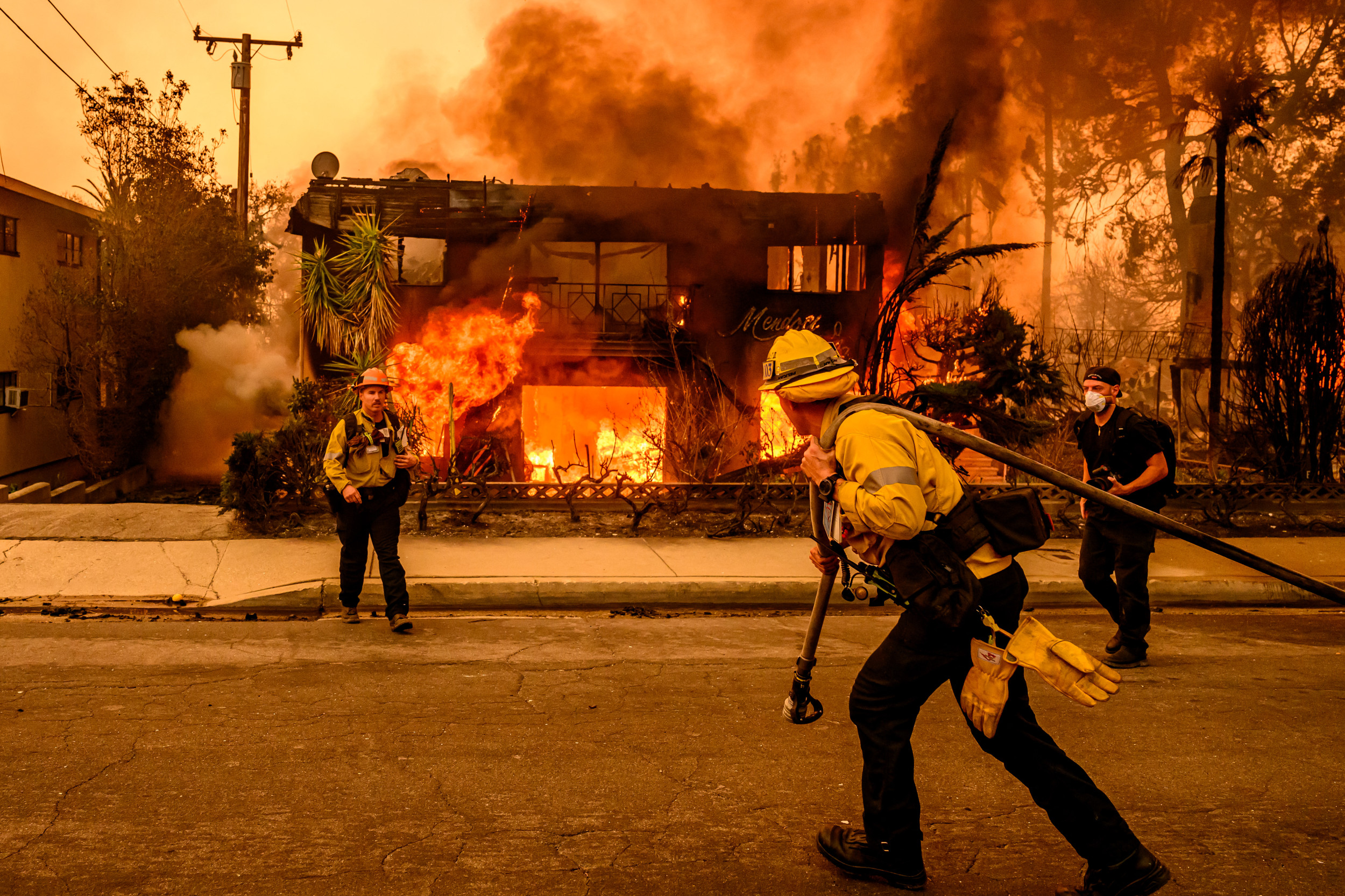Southern California Edison (SCE), a subsidiary of Edison International, is under scrutiny as investigations into the Eaton fire's origins reveal potential malfunctions in its electrical equipment.
The fire, which swept through Altadena, California, in early January, claimed at least 17 lives and destroyed over 9,400 homes and businesses.
With homeowners facing massive losses and ongoing investigations by state regulators, the potential implications for compensation and utility accountability are significant.
Why It Matters
For homeowners in California, the recurring threat of wildfires is a significant concern. These disasters not only result in devastating property losses but also influence insurance availability, property values and regional resilience.
If Edison is responsible for the wildfires, the company could face liability. There are estimated damages ranging from $8 billion to $10 billion, per data analysis company Verisk. This estimate does not account for additional sums that may be awarded in various pending lawsuits involving homeowners and victims.
Utility power lines have been the cause of at least eight of the 20 most destructive fires in the history of California, according to the California Legislative Analyst's Office, though only 10 percent of overall wildfires are caused by utility equipment.

What To Know
SCE submitted two detailed reports to the California Public Utilities Commission on Thursday regarding its ongoing investigation into the origins of both the Eaton and Hurst wildfires.
While SCE has not yet confirmed its equipment as the ignition source for the Eaton fire, it acknowledges that external video footage and grid data suggest possible links to its infrastructure.
"While we do not yet know what caused the Eaton wildfire, SCE is exploring every possibility in its investigation, including the possibility that SCE's equipment was involved," said Pedro J. Pizarro, president and CEO of Edison International, SCE's parent company, in a press release.
If found liable, SCE could be responsible for billions of dollars in damages, directly impacting homeowners and the future reliability of their power supply.
Victor Flatt, assistant director of the Burke Center for Environmental Law at Case Western Reserve University, told Newsweek if the company is found legally accountable and isn't able to pay, it may face bankruptcy—pointing to a similar scenario with Pacific Gas and Electric (PG&E) a few years ago.
"Its assets will likely be bought by someone, and someone will have to operate its distribution system continuously or there would be no power," Flatt said. "The state may have to step in. Both to manage any transfer of the company's assets and/or to backstop the company financially."
Compensation for homeowners could occur through several avenues. Homeowners could receive payouts through legal settlements and court judgments, or state regulators or special compensation funds might facilitate payments to those affected.
Per the release, SCE has not found common or clear signs, like broken conductors, new arc marks near the initial fire area or faults in the active lines there, that would link its equipment to the fire. The utility company stated it would continue to review grid data, photos and video and maintenance records as the investigation continues.
What People Are Saying
Pedro J. Pizarro, president and CEO of Southern California Edison's parent company, Edison International, said in a statement: "Our hearts go out to everyone who has suffered losses. We are working with the local communities SCE serves to rebuild and emerge stronger.
"We understand the community wants answers, and we remain committed to a thorough and transparent investigation."
California-based law firm Bridgford, Gleason & Artinian, which filed a complaint against Southern California Edison, said in a statement: "Based upon our investigation, our discussions with various consultants, the public statements of SCE, and the video evidence of the fire's origin, we believe that the Eaton Fire was ignited because of SCE's failure to de-energize its overhead wires which traverse Eaton Canyon—despite a red flag PDS wind warning issued by the national weather service the day before the ignition of the fire. Our hearts go out to the many victims of this and the other Los Angeles fires."
Victor Flatt, assistant director of the Burke Center for Environmental Law at Case Western Reserve University, told Newsweek: "This is part of an ongoing story of how our entire society (and in this case our system for delivering power) is not adapted to the rapidly changing climate and severe weather. It is very difficult to anticipate the unknown, but that is now the responsibility of those who may contribute to bad outcomes when weather goes further and longer than normal.
"Overall it means more cost to 'disaster proof' infrastructure or a massive rethinking of how we provide basic necessities of modern life (should we have more micro grids and fewer high voltage power lines)."
Louise Bedsworth, executive director at the Center for Law, Energy, and the Environment at UC Berkeley, told Newsweek: "Utilities are a lynchpin for building climate resilience. As any responsible service provider, they must ensure that their infrastructure is resilient and operates safely. Utilities must also accelerate clean energy options so we can avoid the worst impacts of climate change."
August Fern, chair of the Climate Tech Track at Berkeley SkyDeck and partner at Baruch Future Ventures, an investment firm focused on climate technology, told Newsweek: "I've heard the Eaton fire may have started near transmission lines. VEIR and TS Conductor immediately come to mind as companies with new transmission technology to improve the safety of our electric grid...Other technologies monitor the power lines themselves for irregularities in order to allow for immediate response.
"Preventing catastrophic wildfires, much like fighting catastrophic climate change, is not a single-answer solution. All of these technologies need to be implemented to protect us in our increasingly volatile climate."
What Happens Next
As SCE continues its investigations and scrutiny intensifies, the focus for many homeowners will remain on the outcomes and implications of these findings.
About the writer
Claire Dickey is a Newsweek senior editor based in Florida. Her focus is reporting on personal finance news, with extensive ... Read more



